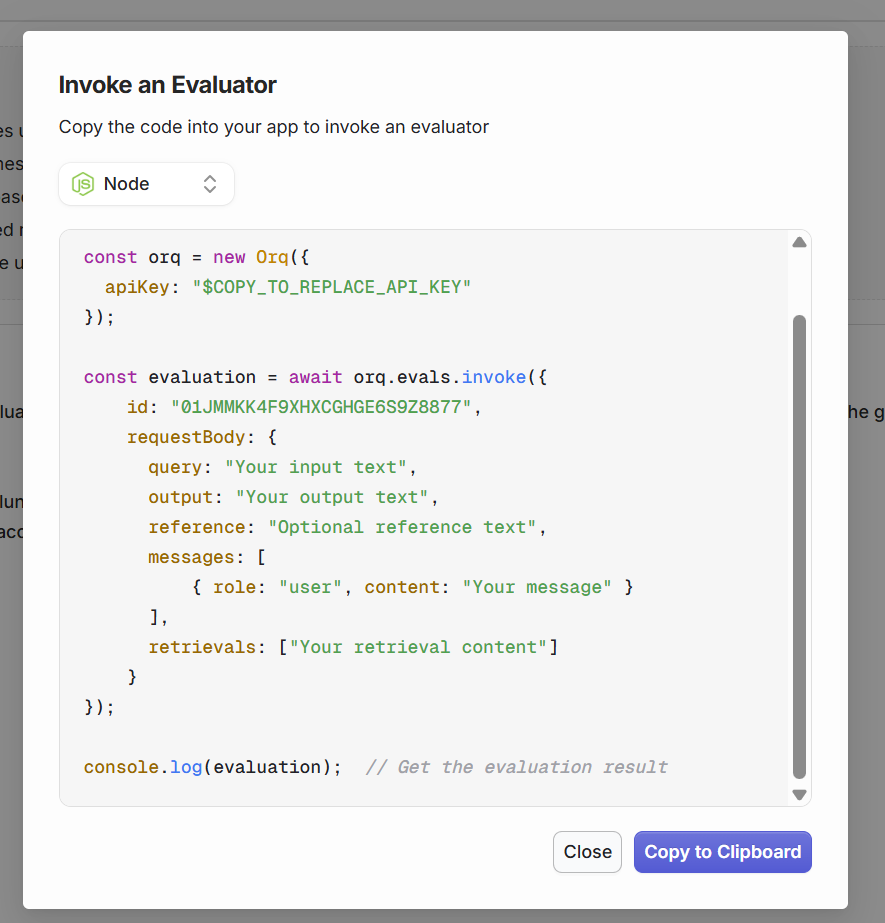Prerequisite
To get started, an API key is needed to use within SDKs or HTTP API.To get an API key ready, see Authentication.
SDK
Example
We’ll be calling the Tone of Voice endpoint: Here is an example call:The query defines the way the evaluator runs on the given output.
The value here holds result of the evaluator call following the query
Calling a custom evaluator
It is also possible to call a custom-made Evaluator made on orq using the API. You can fetch the Evaluator ID to send to this call by searching for Evaluators using the Get all Evaluators API. Then you can run the following API call:
Evaluator code is available directly to use.
Using EvaluatorQ
EvaluatorQ is a dedicated SDK for using Evaluators within your application. It features the following capabilities:- Parallel Execution: Run multiple evaluation jobs concurrently with progress tracking
- Flexible Data Sources: Support for inline data, promises, and Orq platform datasets
- Type-safe: Fully written in TypeScript
Learn more, see the EvaluatorQ repository on Github

